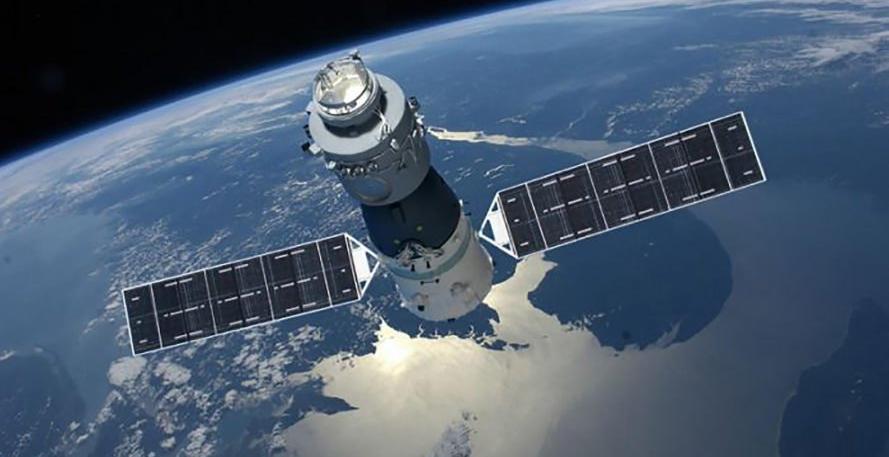Wikipedia (en)
Tiangong-1 (Chinese: 天宫一号; pinyin: Tiāngōng yīhào; literally: "Celestial Palace 1") is China's first prototype space station, serving as both a manned laboratory and an experimental testbed to demonstrate orbital rendezvous and docking capabilities. Launched unmanned aboard a Long March 2F/G rocket on 29 September 2011, it is the first operational component of the Tiangong program, which aims to place a larger, modular station into orbit by 2023. Tiangong-1 was initially projected to be deorbited in 2013, to be replaced over the following decade by the larger Tiangong-2 and Tiangong-3 modules, but as of 22 March 2018 it was still aloft, though in a decaying orbit.
Tiangong-1 was visited by a series of Shenzhou spacecraft during its two-year operational lifetime. The first of these, the unmanned Shenzhou 8, successfully docked with the module in November 2011, while the manned Shenzhou 9 mission docked in June 2012. A third and final mission to Tiangong-1, the manned Shenzhou 10, docked in June 2013. The manned missions to Tiangong-1 were notable for including China's first female astronauts, Liu Yang and Wang Yaping.
On 21 March 2016, after a lifespan extended by two years, the Space Engineering Office announced that Tiangong-1 had officially ended its service. They went on to state that the telemetry link with Tiangong-1 had been lost. A couple of months later, amateur satellite trackers watching Tiangong-1 found that China's space agency had lost control of the station. In September, after conceding they had lost control over the station, officials speculated that the station would re-enter and burn up in the atmosphere late in 2017.
According to China Manned Space, as of 22 March 2018, Tiangong-1 was orbiting at an altitude of 139.7 miles (224.8 km), which corresponds to an orbital speed of 17,000 miles per hour (28,000 km/h). It is expected to deorbit between late March and early April 2018. The station will reenter between 42.7°N and 42.7°S latitude, at an unknown longitude.




